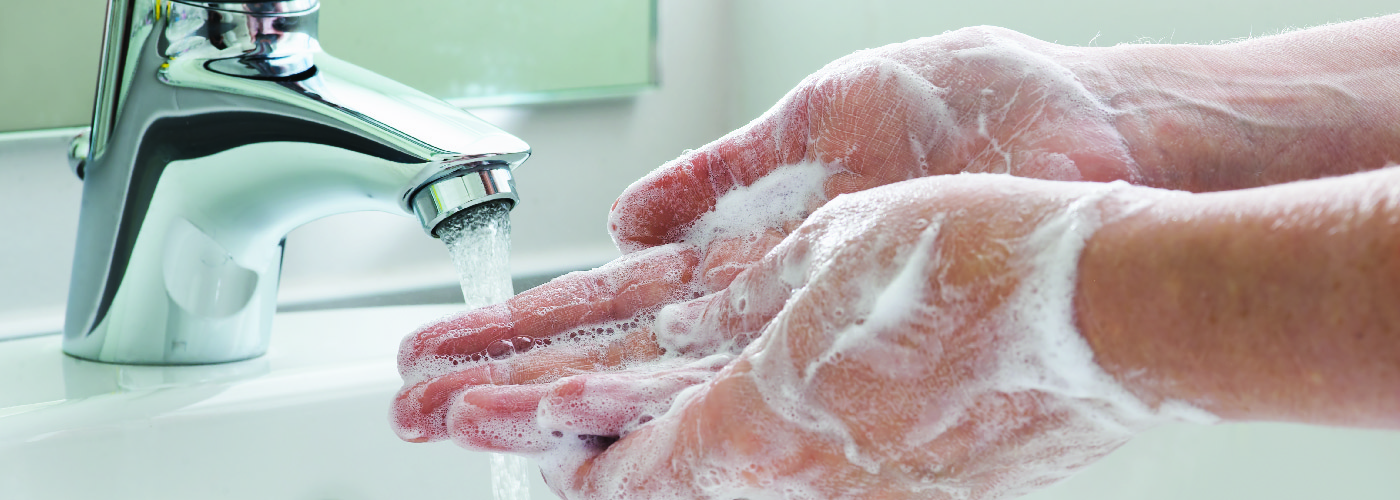Preventing Infection in Child Care Settings
Children in a child care facility are at increased risk of illness or infection because they have limited immunity to such illnesses. Child care workers can help control the spread of infection through infection prevention and control measures, including proper hand hygiene.
FLU SEASON: Consider hanging this poster from Immunize Canada in your childcare facility about preventing influenza in children. For more helpful resources, visit our influenza (flu) webpage.
Understanding how illness and infections are spread
Understanding is the first step to controlling the spread of infection. Infections are caused by bacteria, viruses or other micro-organisms (germs). These micro-organisms are found in body fluids such as:
- Stool
- Vomit
- Tiny droplets produced by breathing, coughing or sneezing
Germs can be spread in different ways and can include person-to-person transmission or can be spread indirectly through contaminated objects and surfaces. People who are infected with an illness can spread infection before any symptoms appear, or after the acute illness is over; others who are infected may show no symptoms at all.
How to prevent the spread of infection
An important part of infection prevention and control is having an infection control program which includes a manual outlining policies and procedures that are clearly available for employees to access. To assist in practicing consistent procedures, the manual should contain:
- Information on surveillance
- Policies on dealing with communicable diseases in both staff and children
- Procedures to manage an outbreak
To ensure consistency, one person should be designated in charge of infection control at your child care facility. This individual should have the authority to complete the following functions:
Surveillance, Control and Prevention
- Develop and maintain a system of identifying, recording and reporting
- Identify and investigate outbreaks and infections
- Promote primary prevention and control measures
Consultation
- Develop and maintain infection control policies and procedures
- Consult with child care workers, parents and health professionals
- Consult and liaise with Southwestern Public Health
No matter how careful you are, there will be some infectious illnesses at your child care facility. Be prepared to deal with it when it occurs and make sure parents are aware of your policies before they register their children at your facility.
Infection prevention and control in child care settings
Here are some helpful resources to prevent the spread of infection in your child care centre:
- Infection Control Manual for Child Care Providers
- Preventing infections
- Cleaning and disinfection
- Cover your cough poster or Cover your coughs & sneezes
- Six simple steps to keep you and me healthy
Hand hygiene
Everyone, everywhere benefits from good hand hygiene practices. Whether it is traditional hand washing with soap and water or using hand sanitizers, good hand hygiene is the single most important procedure for preventing the spread of germs and infections.
Additionally, incorporating hand hygiene education in daily child care activities will encourage children to learn and observe proper hand hygiene techniques.
What is hand hygiene?
Hand hygiene is the action of cleaning your hands. It relates to the removal or killing of micro-organisms from the hands while maintaining good skin integrity.
Two methods of hand hygiene:
Hand washing
Hands are washed with soap and running water when hands are visibly soiled. Liquid soap is preferred and it does not need to be anti-bacterial. Bar soap should not be used in child care settings. If hands are visibly soiled and running water is not available, then a moistened towelette or wipe should be used followed by hand sanitizer (alcohol-based hand rub). Download and print the following hand washing resources:
Hand Sanitizer (Alcohol-Based Hand Rub)
Alcohol-based hand rub (hand sanitizer) is the preferred hygiene choice when hands are not visibly soiled. The product needs to have a D.I.N (Drug Identification Number) or N.P.N (Natural Product Number) and have an alcohol content of at least 60%. Download and print the following hand cleaning resources:
Other Hygiene Tools
Glove Use
Gloves are an example of personal protective equipment (PPE) and are not a substitute for proper hand hygiene. They should be used for direct contact with any body fluid, for handling items soiled with body fluids or when the wearer has open cuts or lesions on the hands. Hand hygiene must be performed before and after glove use. Gloves are task-specific and should never be reused.
Disposable Wipes
Disposable wipes are a single-use wet cloth or tissue intended to remove dirt or other materials from the skin. They are often used for diaper changing because of their convenience. If hands are visibly soiled and running water isn’t available, use disposable wipes to remove visible soil from your skin and follow up by using hand sanitizer.
Animals in child care settings
Learn about Recommendations for Management of Animals in Child Care Settings from the Ministry of Health.
Common child infections
Find fact sheets and information on common infections:











